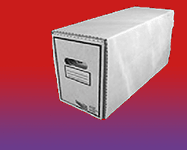COMIC AND MAGAZINE PRESERVATION
IF YOU LIKE THESE ARTICLES AND WANT TO READ MORE, E-MAIL US AT RICH@COLLECTIONDRAWER.COM TO BE ADDED TO OUR E-MAIL LIST.
ARE "ACID FREE" BOARDS REALLY ACID FREE? Most comic and magazine collectors use backing boards to protect their collectibles from damage by bending. But what if they are causing more harm than good? What if they are adding to the acidity and resulting yellowing of the items you are trying to protect? The sad truth is most backing boards are. Don't believe the packaging when it claims that the boards are "acid free" because only two brands really are. And one brand qualifies for "Pants on Fire". Here is the best research study we have found: https://www.cgccomics.com/boards/topic/205695-are-acid-free-backing-boards-truly-acid-free-time-to-ph-test-amp-find-out/
TOP 10 WAYS TO DESTROY YOUR COMICS AND MAGAZINES (And you probably have never thought about them!)
You can also hear our discussion on the I Want More Comics podcast here: http://podcast.iwantmorecomics.com/?name=2016-08-28_episode_017_mixdown.mp3
10. Storing them where they can get wet or damp. This is less obvious than it seems. Not only do they need to be stored on a raised platform if they are in your basement, you need to ensure that there are no pipes overhead. The worst tragedies we have heard of come from some type of flooding. But wait, you say there no chance of flooding? What about humidity?
9. Reading them while eating. Oops happens!
8. Storing them in a warm area. One of the greatest enemies of paper is heat. This will accelerate the acidification process, causing the paper to yellow prematurely.
7. Packing boxes too tightly. The reality is one of the most commons forms of damage is self-inflicted. Comics were never meant to be slid between one another. Worse, the pressure from the comics being squeezed can cause the same spine roll found when they are stacked.
6. Leaving them in polyethylene (and polypropylene?) bags without changing the bags periodically. These bags contain plasticizers that can leach into the paper, causing the white area of the paper to take on a yellow cast. If the bag feels oily it is already too late. Far too many collectors choose these bags because they are less expensive than Mylar or Mylites. But they forget that these bags must be replaced regularly. When you consider the cost of replacing the bags over a 10 or 15 year period and the value of your time to re-bag your entire collection, the savings in buying cheap bags is truly a false economy. What's that you say? Your store sells them in a bag already? Better ask what kind of bag they use.
5. Tape on bag flaps snagging the comic when it is removed or inserted in the bag. So easy to do. Either take the tape off completely or using double faced tape applied to the bag itself and always peel the flap off the tape.
4. Allowing them to sag and bend in boxes, causing spine cracks. Regardless of how thick the backing board is, it is going to bend under the weight of 40-50 pounds of paper lying on top of it. This is an advantage of using our BoxSort Upright Divders (yeah, we know, free plug).
3. Stacking them for any period of time, causing spine roll. Remember that the spine side of the issue is actually thicker because of the fold in numerous sheets of paper and the staples. This thickness may not be noticeable in one issue, but stack 10-20 or more issues and that difference becomes multiplied. Add the weight of those issues it won't take long for them to take on a slight bend near the spine. The worst part is it is n easy habit to fall into and it doesn't take long.
2. Storing them nose down. Seriously, never do this. Comics and magazines must always be stored on end such that the spine supports the issue. Even if you have them in a board and bag, the issue can sag in the bag causing a slight permanent bend.
1. Allowing them to be exposed to sunlight. So the simple solution is to never display them. That's a start. But the UV light from florescent lights is also bad. Think you are safe because you don't have flourescent tube lights around? Think again. What about compact flourescent light bulbs?
It’s not surprising that there is quite a bit of confusion about how to best protect your comic or magazine collection. The Internet has a profusion of suggestions, everything from comments on message boards to blogs to websites reputing to be “experts” on the topic. Unfortunately, most of this information is incorrect despite the sincere efforts of the writers. There seems to be two major causes for this: collectors who forget that paper is subject to a variety of climate issues and what may work in their area is inadequate elsewhere. Additionally, many of these writers have only been collecting for a short period of time. What works for 2 or 3 or 5 years may be destructive 10-20 years later. The point of protecting your periodicals is to avoid problems over the long term.
We at The Collection Drawer Co. have one significant advantage because we are collectors ourselves and have been collecting for over 50 years (egads!), well before the first preservation products were invented. During that period we have tried a number of techniques, that is, we have made every mistake in the…ummm… magazine. This has given us the opportunity to see first hand what works and what does not over a prolonged period of time with a variety of approaches. So these are some things we have learned over that time. Keep in mind that your mileage may vary for all the reasons listed above.
BUT WAIT! -- WE HAVE MORE TO SAY... By far the single most important technique in preserving your comics and magazines has nothing to do with spending money on costly products. It is very simple. Always store your collectibles in a cool, dry place. Heat and moisture are paper’s worst enemy and the newsprint used in older comics is particularly vulnerable. A warm air temperature can cause the paper to turn yellow in less than a year. One of the most valuable collections ever found is the Mile High Collection, owned by Edgar Church and uncovered after he passed way by Chuck Rozanski. A significant characteristic of those issues are the whiteness of the pages despite being printed on cheap newsprint in the 40’s. But this is not surprising when you realize that they were stored in his basement, the coolest area of the house, and he lived in Denver, Colorado, known for its dry climate.
Storing print collectibles in a cool area is easy as long as you have air-conditioning or a basement (assuming it will not flood! You DO have everything raised off the floor, right?!?) but humidity is a bigger challenge since some areas of the country tend to be quite humid. Some collectors suggest using silica packets such as those found in shoeboxes, electronic equipment boxes and so forth. These do not work. They are only capable of absorbing a small amount of moisture and once they reach their maximum saturation cease to absorb. We have investigated materials that can be baked to dry them out but even these seem to have only limited usefulness.
The most effective method to reduce humidity is to purchase a dehumidifier and have it run continuously in the area where the collectibles are stored. Circulation in this area should also be kept to a minimum so moist air is not introduced. The key here is in realizing that if your area is humid, it is always humid in greater or lesser degrees. The air is constantly circulating in and around your collectibles, so the moisture must be constantly removed from the air. Note, too, that the cooler the air is the less moisture it can hold, so reducing the temperature even further helps as well.
The second most common damage collectors that we know have experienced is bending. Step one in preventing this is to never stack comics or magazines lying flat. This will cause the spines to curl and can occur even if they are stacked for a short period of time. Even standing periodicals on their “nose” end (the end you open them from) will cause warping over time. Comics and magazines should always be stood on the bottom (or top) end with the spine vertical so it provides some support. To prevent the other causes of bending the next most important item you need (besides our BoxSort Upright Dividers) is backing boards. But care needs to be taken in their selection and use as well since they can introduce more acidity to your comic or magazine.
We’ll write more about that the next time. In the meantime, let’s us know at Rich@CollectionDrawer.com if you find this column useful or would like to be added to our newsletter about preservation.

